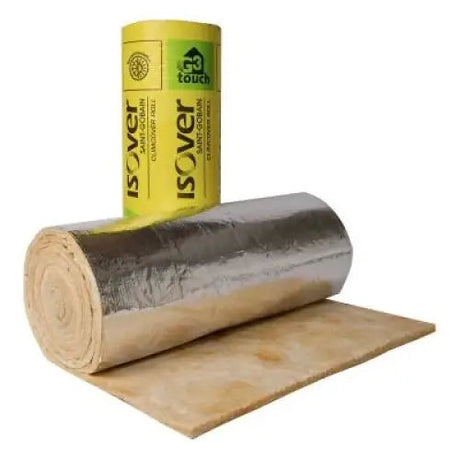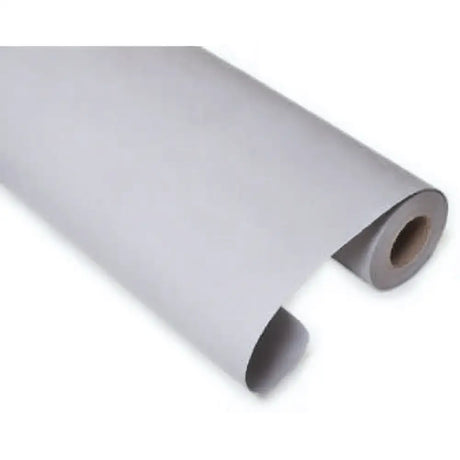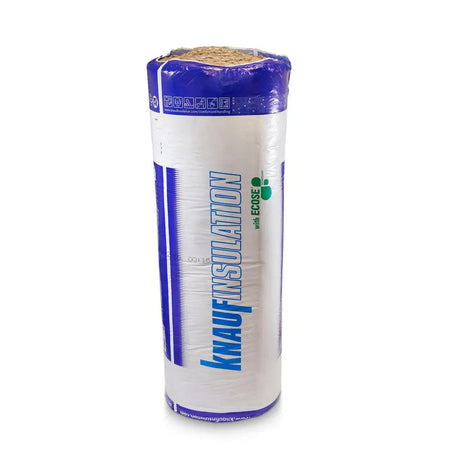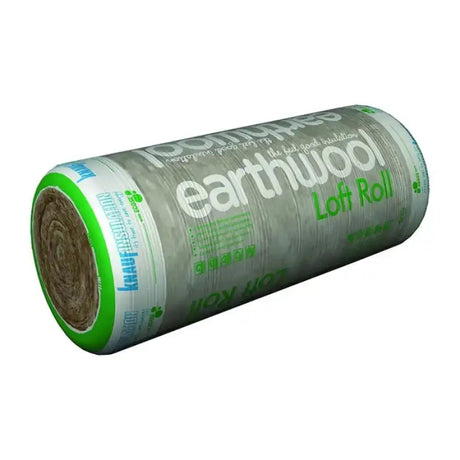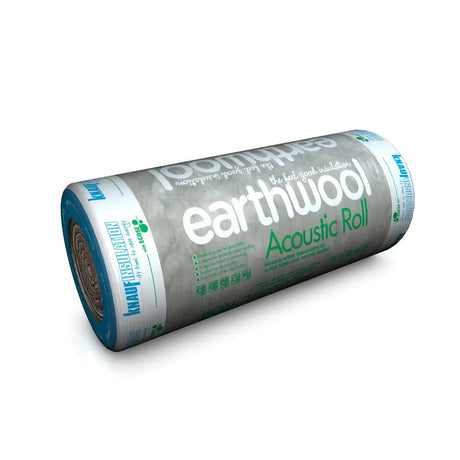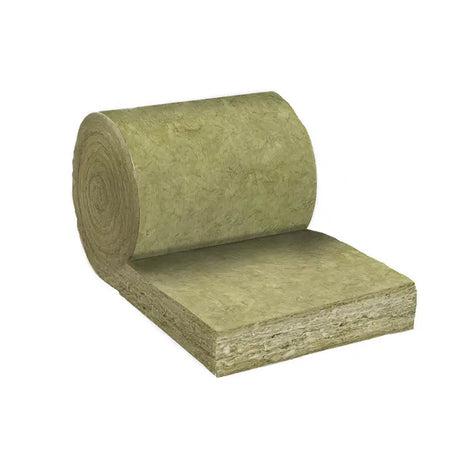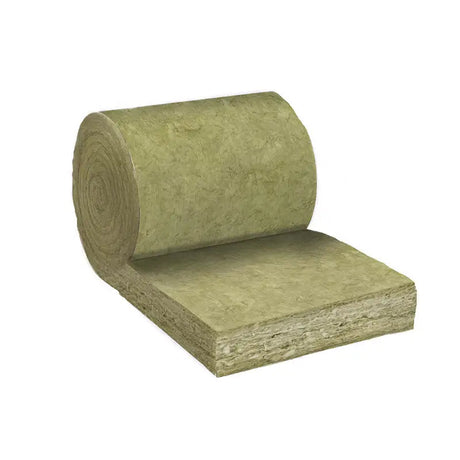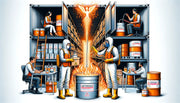Thinking about the safe use of elastomeric foam insulation doesn't often lead us to its hidden dangers. Although new insulation technology has many advantages like better energy efficiency and less noise, it also brings several health considerations to the forefront. This article aims to find the right balance between effectiveness and safety, focusing on best practices during installation and upkeep of elastomeric foam insulation to keep homes both warm and secure.
Key Takeaways
- Identifying potential health risks related to elastomeric foam insulation.
- Understanding the significance of moisture resistance in preventing mould growth.
- Implementing NAIMA's established work practices to ensure safe handling of insulation materials1.
- Recognising the need for personal protective equipment during insulation processes.
- Evaluating the long-term implications of insulation choices on indoor air quality and fire safety2.
Understanding Elastomeric Foam Insulation
The invention of elastomeric foam insulation in the 1950s marked a shift in insulation from natural to man-made3. It's known for great thermal performance and moisture resistance. Over the last twenty years, its importance has grown because of indoor air quality (IAQ) worries3.
Its ingredients include synthetic rubber (NBR or EPDM), PVC, and a chemical that creates foam. This closed-cell foam insulation is made without CFCs, HCFCs, or HFCs, meeting tough environmental rules3. Now, it's used everywhere from the food industry to modern pharmaceuticals because of its flexibility3.
Technology and market changes have led to new kinds of elastomeric foam. These include non-halogen types for high temperatures and laminated options for outdoor use3. Adding antimicrobials has been a key upgrade, improving its properties3. Its unique structure stops moisture very effectively, making it great in damp areas3. It's also healthier because it is fiber-free, doesn't have formaldehyde, and has low VOCs, making it a better choice for places caring about IAQ3.
Below is an outline of key uses and upgrades of elastomeric foam, showing its wide range of uses and continuous enhancements:
| Advancements | Applications | Benefits |
|---|---|---|
| Non-halogen high-temp foams | Industrial heating processes | Resists high temperatures |
| Antimicrobial additives | Healthcare facilities | Prevents microbial growth |
| Laminated exterior products | Outdoor pipelines | Durable against weathering |
| Fiber-free, low-VOC | Schools, Offices | Improved IAQ |
Experts and management teams prefer elastomeric foam insulation for its wide-ranging benefits. It's adaptable, making it a top choice for high-standard insulation3.
Comprehensive Guide to Health Safety Foam Insulation
Spray Polyurethane Foam (SPF) insulation is gaining popularity in the US for both new constructions and renovations. It's essential to focus on health safety when using it4. SPF contains isocyanates and various chemicals. It's crucial for both professional and DIY users to follow safety protocols. This helps lower health risks and ensures safe living spaces45.
https://www.youtube.com/watch?v=zytffIAuEsg
| Safety Aspect | Guidelines for Professionals | Guidelines for Homeowners and DIY Users |
|---|---|---|
| Inhalation Risks | Use protective gear and provide adequate ventilation6 | Ensure work area is isolated and ventilated; leave re-entry to professionals after 24 hours4 |
| Skin Contact | Wear full-coverage clothing, safety glasses, and gloves6 | Avoid direct contact and follow product label instructions6 |
| Training & Awareness | Undergo medical surveillance and training on SPF materials4 | Assess suitability and educate on potential health effects4 |
Minimizing Inhalation Risks
Contractors should wear respirators and ensure good ventilation when using SPF to reduce inhalation risks6. It's also vital to correctly handle both low and high-pressure foam systems. This ensures the safety of workers from isocyanates5.
Preventing Skin Contact Hazards
Avoiding skin contact with SPF is very important. It can stick to skin and hair fiercely. Contractors need to wear protective clothing, gloves, and safety glasses6. Homeowners should keep away from where SPF is being installed to prevent exposure4.
Maximizing Ventilation During Installation
Good ventilation during installation is crucial for everyone's safety. It helps clear out harmful emissions and reduces the chance of breathing in SPF chemicals4. After installing SPF, keeping the area well-ventilated is advised. This practice varies based on SPF type and the condition of the building4.
Identifying and Controlling Potential Risks
In the world of insulation, it's important to know and handle potential dangers. Doing a detailed risk check helps find insulation risks and decide on safety steps. The rules for workplace air, set at 0.02mg/m³ for an 8-hour exposure and 0.07 mg/m³ for 15 minutes5, are key for good air quality.
Checking workers’ health through biological monitoring is key. It measures specific chemicals in urine after they've been exposed to Isocyanates5. Also, companies must provide a safe place to work. This includes having a strong Safety Statement and a clear Risk Assessment, especially for tasks with spray foam5.
But, managing insulation risks isn't just about checks and records. Using good ventilation and right masks is vital7. To safely handle SPF insulation, a detailed plan is needed. This plan should cover choosing and looking after personal protective gear, including tests to make sure masks fit properly5.
Risks aren't just at work. The time it takes for products to set and the weather conditions matter too, for safety after applying SPF insulation8. These complex issues show why standard rules are needed. ASTM is working on creating these rules for measuring SPF product emissions, showing commitment to safety8.
Keeping a clean site and taking care of skin are key in avoiding risks, like skin disease from isocyanates7. Regular health checks and exams help keep an eye on possible dangers5. Below, the table shows steps to take for safety:
| Risk Factor | Control Measure | Health Surveillance Component |
|---|---|---|
| Isocyanate exposure | Use of non-isocyanate products, minimisation of spray activities, proper usage of RPE | Biological monitoring, annual lung function tests, skin assessments57 |
| SPF application hazards | Ensuring adequate ventilation, RPE with face-fit tests, maintaining workplace hygiene | Routine questionnaires, pre-employment medical assessments5 |
| Curing times and conditions | Monitoring temperature and humidity, adhering to product-specific instructions for curing | Ongoing research, ASTM standards development, EPA advisories8 |
By focusing on these measures together, we ensure safety aligns with work duties. Sticking closely to rules and improving risk checks helps protect against insulation dangers.
Installation Best Practices for Homes and Buildings
Making sure our homes and buildings keep warmth in is key to saving energy. The right way to put in spray foam insulation (SPF) makes a big difference. It not only keeps homes warm but also helps our planet. Workers must use the right tools and wear safety gear to make sure SPF lasts long and works well.
Proper Handling Techniques
Putting SPF in correctly is very important for its success. In the UK, SPF is about 40% of all insulation used9. Workers need to follow safety rules carefully to avoid harm4. It's critical to mix SPF just right, whether it's for new buildings or fixing up old ones4. In the UK, there are guides to help get SPF into roofs the best way9.
Understanding the Importance of Protective Gear
Wearing the right safety gear is a big deal with SPF. Experts say people should not be home during or right after SPF is put in410. Health checks before working with SPF can protect workers, especially if they already have certain health issues4. This approach helps keep everyone safe.
When SPF is installed perfectly, it greatly improves how well a building keeps heat. This means less energy used and lower energy bills. It also means being cosy at home while helping to cut down on harmful gasses9. SPF is durable – it can last as long as the building does if put in correctly, showing a real commitment to saving money and the environment9.
But, the full benefits of SPF come when it's installed to avoid problems like dampness. Experts need to check the materials and potential risks10. With changing weather and more storms, it's very important to keep an eye on roofs with SPF. These roofs need regular checks and maintenance10.

To wrap up, following the best ways to install insulation is not just about the technical side. It's also vital for our health. As new products like SPF in a can become available, we must stick to high standards. With a focus on safety gear, these detailed plans are the key to doing insulation work right.
Key Characteristics of Closed-Cell Elastomeric Foam
Exploring the world of closed-cell elastomeric foam, we find materials known for their excellent insulation. Their strength comes from their structure and how they are made. They are famous for enhanced moisture resistance. This means they stop condensation well. This is key for keeping systems efficient and stopping moisture that could harm insulation and raise energy costs.
Enhanced Moisture Resistance
There have been big steps forward in how well insulation materials resist moisture. Closed-cell elastomeric foam is a top pick in places where moisture is a big problem, like in refrigeration pipes and HVAC systems11. Its cellular structure forms a strong barrier against moisture. Also, it is eco-friendly because it does not contain CFCs, HCFCs, or HFCs11.
Superior Thermal Performance
Closed-cell elastomeric foam performs better than some old materials like expanded polystyrene (EPS) in keeping heat consistent. It's so good that its thermal conductivity is like having an air gap for over ten hours12. This ability to keep temperatures stable is crucial for saving energy in buildings and factories.
Research reveals that neoprene foam, often used in these products, can trap a lot of gas (>70%). This greatly reduces its heat conductivity12. These improvements show how the insulation industry is evolving to meet demands for materials that save energy, last long, and help the environment.
In conclusion, closed-cell elastomeric foam is a standout in insulation, bringing together enhanced moisture resistance and superior thermal performance. Its insulation abilities make it a key material for the future of eco-friendly and energy-efficient construction.
Addressing Environmental and Health Concerns
In response to increasing environmental concerns and health concerns, the industry is moving towards eco-friendly insulation and sustainable insulation materials. The widespread use of Spray Polyurethane Foam (SPF) highlights the need to tackle these issues13. As a result, both consumer awareness and regulations are improving to minimize harm from conventional insulation.
The Consumer Product Safety Commission (CPSC) has worked with groups to set ASTM standards. These standards aim to make SPF safer to use13. It's crucial because SPF contains isocyanates and other potentially harmful chemicals13.
Given these risks, it's advised that residents leave their homes for at least 24 hours after installing SPF13. This precaution protects people's health. Additionally, emission levels from SPF can vary, making it complex to fully protect both our environment and homes13.
Contractors must undergo advanced training and have proper licensing to apply SPF safely. This requirement ensures quality and reduces hazards, supported by necessary insurance in some places. Those working with isocyanates in materials also need health checks13.
- Lack of standard procedures for SPF removal highlights the need for proper application13.
- It's vital to have clear re-occupancy guidelines and full product information for safety13.
- People with specific health conditions need special consideration to ensure their safety13.
| Concern | Industry Response |
|---|---|
| Health Impact | Evacuation post-installation, medical surveillance |
| Environmental Impact | Development of eco-conscious standards and guidelines |
| Quality Assurance | Contractor training and liability insurance |
Insulation is key for energy saving and comfort. Still, it's vital to focus on environmental and health concerns. Using SPF wisely, with careful installation and safety protocols, is part of striving for a greener future. This way, we protect both our planet and those living on it.

Eco-friendly Alternatives to Elastomeric Foam
Building materials are changing, focusing on being green and safe. Eco-friendly insulation is now more popular. It's better for our planet and reduces health risks found in older types.
Nitrile Rubber Insulation and Its Advantages
Nitrile rubber insulation stands out for being eco-friendly. It resists chemicals and oils, which makes it last longer. Its thermal properties are excellent and it doesn't support fire spread, making it a safe choice14.
This insulation doesn't have fibres, lowering the chance of air pollutants during setup.
Insulating with Polyurethane: A Safer Choice?
The EU has banned harmful chemicals in insulation, like HBCD. This shows a commitment to safety and the environment14. Polyurethane insulation now has fewer health risks. Earlier types contained MDI, which could harm lungs and cause asthma14.
New polyurethane doesn't have dangerous ingredients like formaldehyde. This makes it safer and eco-friendly14.
Nitrile rubber and improved polyurethane insulation are vital for eco-friendly building. They avoid harmful substances like asbestos, found in old insulation. These safer, green options are great for those who care about health and the environment14.
Evaluating Fire Safety and Indoor Air Quality
Choosing the right insulation is crucial for fire safety and clean air inside buildings. Fire-resistant materials, like fiberglass and mineral wool, keep buildings safe. They don't catch fire easily, which is important for protecting people and the building's structure. These materials work well in wood frames, acting as a shield against fire15. But, it's also vital to think about how easily an insulation can catch fire. For example, spray foam insulation might catch fire at around 700°F15.
Good air inside is key for a healthy living space. The type of insulation used can affect this air quality. Nowadays, most fiberglass insulation doesn't use formaldehyde, making the air cleaner15. Fiberglass and mineral wool are great because they don't let mold grow. This is good because mold can be a problem with insulation made from plants, which can spread mold15.
It's helpful to compare different insulations to understand fire safety and air quality. Here's a table showing how some insulations stack up:
| Insulation Material | Fire Safety | IAQ Considerations |
|---|---|---|
| Fiberglass | Noncombustible, recognized as fire block15 | Formaldehyde-free, does not support mold growth15 |
| Cellulose | Considered a fire hazard despite treatments15 | Can support mold growth, potentially corrosive15 |
| Spray Foam | Superior fire resistance with proper installation16 | IAQ returns to pre-installation level within 24 hours with Icynene products17 |
Looking after your health means watching out for the dangers of spray foam insulation. Making sure it's installed right and checked often is vital15. Icynene has been used safely in over 350,000 homes for more than 25 years. Their products are safe from fire and ensure clean air quickly after they're put in17.
In conclusion, picking insulation needs careful thought about fire safety and air quality. These two factors are linked and crucial for safe, durable buildings. Icynene is leading the way in combining fire safety with good air, making homes safer and healthier1617.
Cost-Effective Insulation Solutions
With energy costs rising and a push for sustainability, choosing the right insulation is key for homes and businesses. It is not just about lower energy bills. It also means more savings over time and a lesser effect on the environment. By comparing elastomeric foam to fibreglass insulation, we can see which is better for economy and ecology in the long run.
Comparing Elastomeric Foam to Fibreglass Insulation
Elastomeric foam and fibreglass are top choices for insulation. Elastomeric foam has a closed-cell design that keeps heat well, making it ideal for storage tanks in many sectors like Oil and Gas or Food and Beverage18. It works well in all temperatures, helping industries save money and stay profitable despite high energy costs18.
Fibreglass is often used to insulate ducts in spaces without heating or cooling and can handle high heat19. But elastomeric foam is gaining popularity because it can save more money in the long run. It protects against fire, reduces noise, and limits heat loss or gain, making it a better choice for saving money18.
Long-Term Savings with Quality Insulation Materials
Good insulation is about more than saving energy right now. For businesses using storage tanks, elastomeric foam's better insulation means big savings. It reduces the need to heat or cool, cutting energy use and costs18. These savings, along with fewer greenhouse gases and safety for workers, show it cares about the environment and health18.
HBS spray foam from top companies like Mass Foam Systems Ltd offers better energy efficiency than older materials20. It's made from renewable resources and can be recycled, making buildings have a smaller carbon footprint. Suitable for homes, businesses, and industries, its better performance and lower environmental impact show saving costs today is a smart future investment20.
When looking at elastomeric foam versus fibreglass insulation, think beyond upfront costs. Consider long-term financial and environmental advantages of quality insulation. This way, decision-makers can pick insulation solutions that offer lasting value.
Maintenance and Upkeep for Healthy Indoor Environments
Keeping your insulation in good shape is key for clean air inside and for everyone's health. It’s alarming that indoor pollution contributes to 2-3% of global health problems, according to the World Health Organization21. So, checking your insulation regularly is essential to avoid health risks from indoor contaminants.
The need to keep indoor spaces clean, especially where insulation is concerned, is huge. Dangerous substances like PBDEs and phthalates can harm your health. Studies show they're linked to conditions like asthma and allergies in kids. This highlights the need for keeping our homes free from dust21.
Looking after your insulation does more than just protect air quality. The Surgeon General's advisory in 2009 pointed out how important healthy homes are. They are key in tackling bigger issues like climate change21. Keeping insulation and living areas clean helps make our homes healthier and supports the planet.
Experts advise that you should check your insulation regularly. This can spot problems like degradation early. Ignored, these can be sources of contamination, like PCBs found in some buildings. It’s about keeping the air we breathe safe and protecting our health21.
To sum up, good maintenance routines like cleaning, inspecting, and fixing issues promptly are vital. They keep the air in our homes safe from pollutants. By sticking to these practices, we can all enjoy healthier living spaces.
Conclusion
The article has thoroughly explored elastomeric foam insulation, focusing on its health aspects and safe use. It shows how people in the UK can protect their health by following these guidelines. This ensures homes are safe and consider health risks. Fiberglass and mineral wool insulation are noted as fire-safe options. They need no fire-retardant treatments, making them a top choice for fire safety15.
It's stressed how vital safe insulation use is, highlighting the need for expert installation. This is crucial for items like spray foam. If done wrongly, they can release dangerous gases and offer poor insulation. This could lead to extra costs and safety hazards22. The article has raised concerns about the safety of cellulose and some foam insulations. It calls for more tests to check their safety15. Clearly, picking the right insulation and how it's installed is key to avoiding long-term health and environmental issues.
Insulation options have been carefully analyzed in this piece. This guidance is based on solid data and complies with safety standards. At a time when being eco-friendly is as important as being innovative, elastomeric foam insulation deserves careful consideration. It should be chosen for its low impact on air quality and its ability to prevent mold and toxic releases1523. By following these practices, homeowners can improve their living space. They guarantee both effectiveness and safety in their insulation decisions.
FAQ
Why is health safety important when using elastomeric foam insulation?
Health safety matters when using elastomeric foam insulation. It lowers risks during installation and upkeep, keeping everyone safe.
What are the potential health risks associated with foam insulation?
Using foam insulation the wrong way can cause breathing problems and skin issues. This includes respiratory conditions and irritation.
How can I minimize inhalation risks when using foam insulation?
To lessen inhalation risks, always wear the right respiratory gear. Also, ensure the area is well-aired during the work.
What precautions should I take to prevent skin contact hazards with foam insulation?
To avoid skin hazards, make sure to wear protective clothes, gloves, and goggles. This prevents direct skin contact with the foam.
How can I maximize ventilation during the installation of foam insulation?
Boost ventilation by opening doors and windows or using fans. This cuts down on airborne particles while you're working.
How should I identify and control potential risks associated with insulation materials?
It's key to assess the risks by conducting a risk assessment. Then, use the right safety gear and handle materials properly.
What are some common hazards associated with insulation materials?
Insulation materials often pose risks like inhaling harmful particles, skin contact problems, and fire dangers.
What are the best installation practices for elastomeric foam insulation in homes and buildings?
Use sharp tools for cutting the material and always wear gloves and safety goggles. Safe handling is essential for installation.
What are the key characteristics of closed-cell elastomeric foam insulation?
Closed-cell foam insulation is great for blocking moisture and keeping heat in. It's a top choice for many uses.
How can I address environmental and health concerns associated with insulation materials?
Choose insulation that's both kind to the environment and safe for health. Look for sustainable options that lower environmental impact.
What are some eco-friendly alternatives to elastomeric foam insulation?
Nitrile rubber insulation is green and resists oils well. Polyurethane is another choice, but check its safety first.
What considerations should I have for fire safety and indoor air quality when choosing insulation materials?
Pick insulation that's fire-resistant to stay safe. Also, go for options that won't harm the air inside your home.
Is elastomeric foam insulation cost-effective compared to fiberglass insulation?
Elastomeric foam saves money over time with its energy savings. Still, compare upfront costs and long-term benefits with fiberglass.
What maintenance and upkeep tips can help maintain a healthy indoor environment with insulation?
Keep insulation and HVAC systems clean and well-maintained. Fix any issues quickly. This keeps the indoor air healthy.
Source Links
- https://insulationinstitute.org/wp-content/uploads/2016/02/BI502.pdf
- https://www.osha.gov/publications/hib19890510
- https://insulation.org/io/articles/insulation-materials-closed-cell-elastomeric-foam/
- https://www.cpsc.gov/s3fs-public/Spray-Polyurethane-Foam-Insulation-Health-and-Safety-Recommendations-for-Consumers.pdf?RiY.H7TvmFfiA9I8c9.v9q7ERA18bKoC
- https://www.hsa.ie/eng/publications_and_forms/publications/chemical_and_hazardous_substances/spray_polyurethane_information_sheet.pdf
- https://www.whysprayfoam.org/spray-foam/health-and-safety-considerations/
- https://www.hse.gov.uk/construction/healthrisks/hazardous-substances/isocyanates.htm
- https://archive.epa.gov/epa/saferchoice/potential-chemical-exposures-spray-polyurethane-foam.html
- https://insulationmanufacturers.org.uk/wp-content/uploads/2023/05/IMA-SPRAY-FOAM-CODE-OF-PRACTICE-MAY-2023-FINAL.pdf
- https://www.rics.org/content/dam/ricsglobal/documents/press-releases/Spray foam insulation consumer guide_March2023_updated.pdf
- https://www.insulation.org/io/articles/insulation-materials-closed-cell-elastomeric-foam/
- https://www.ncbi.nlm.nih.gov/pmc/articles/PMC9080917/
- https://www.cpsc.gov/s3fs-public/Spray-Polyurethane-Foam-Insulation-Health-and-Safety-Recommendations-for-Consumers-2.pdf
- https://www.ewg.org/healthyhomeguide/insulation/
- https://insulationinstitute.org/im-a-building-or-facility-professional/residential/health-safety/
- https://www.fireretardantsinc.com/news/is-fire-resistant-spray-foam-insulation-fire-retardant/
- https://www.homelogic.co.uk/wp-content/uploads/2016/07/Icynene-Over25YearsofProvenExperience.pdf
- https://www.isover-technical-insulation.com/documents/brochures/tank-2024-final.pdf
- https://www.energy.gov/energysaver/types-insulation
- https://www.massfoamsystems.co.uk/blog/guide-to-hbs-spray/
- https://www.ncbi.nlm.nih.gov/pmc/articles/PMC2800071/
- https://www.sprayfoam.co.uk/blog/importance-professional-insulation-installation.html
- https://www.sciencedaily.com/releases/2012/11/121125192833.htm


